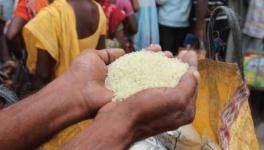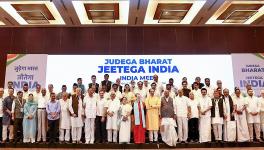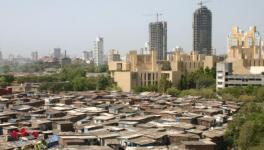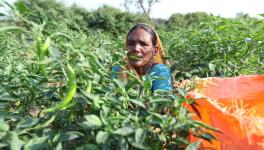Bumper Harvest, Yet 20 Crore Indians Go Hungry
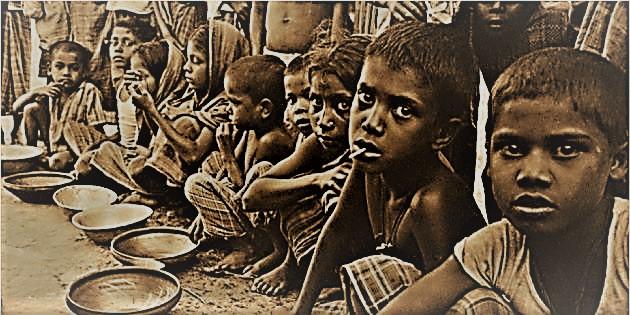
Celebrations were barely over in New Delhi on the news that the 2017-18 agricultural year had yielded a record harvest of both foodgrains (284.83 million tonnes) and fruits and vegetables (307 million tonnes) when another bit of news trickled in last week, largely ignored by the government. This was that India stood at rank 103 in the Global Hunger Index (GHI) which covers 132 countries with rankings given to 119.
According to GHI calculations based on data collected by our government during 2015-17, 14.8% of the population in India was undernourished. That’s about 19.8 crore (198 million) people, a shocking figure.
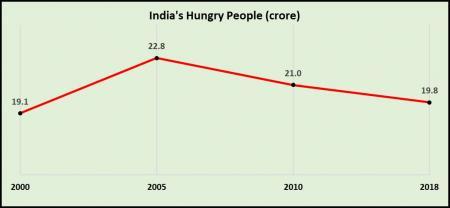
The GHI is calculated by taking into account four indicators – wasting and stunting in under-5 children, mortality rates of under-5 children and undernourished population. With these, a fair picture of the country’s hunger levels, in terms of all essential nutrients including micro-nutrients, emerges.
But the worrying thing is this: despite a steady increase in food production, hunger prevalence in India remains at unconscionable levels. This indicates that there is a serious, fatal flaw in the way foodgrain is being distributed among the people. There are people getting more than necessary food and then there are others, running into millions, who are not getting sufficient food.
Another factor for India is regional disparities and also community-based disparities. For instance, remote regions, especially in rain-fed areas, will have people with much higher level of undernourishment compared with those with more production, better irrigation, better access. People in Punjab and Haryana get more food than, say, those living in the interiors of Jharkhand or Odisha.
There are whole sections of people suffering from undernourishment because of their lowly economic status (e.g. agricultural labourers) and their social status (Dalits and adivasis). Even gender-based disparities exist with girls and women suffering from more hunger than their counterparts. These features of India’s deadly hunger crisis have been well recorded in the past in National Sample Survey Organisation surveys and the National Family Health Survey reports.
Modi Govt.’s Blasé Response
Speaking at a function to mark the World Food Day on October 16, Agriculture Minister Radha Mohan Singh brazened it out by assuring a gathering of entrepreneurs and agricultural scientists that "Achieving zero hunger level by 2030 is a big goal. Our government is working continuously in a phased manner towards that direction." As an example of this work, he said that the government had decided to support “150 start-ups out of 200 and supporting entrepreneurs to establish processing units.”
Is this all that the Agriculture Minister has to offer? Another 12 years of hunger in which millions of children will be born and brought up with their physical and mental development constrained by lack of food? Another 12 years of children dying before they reach their fifth birthdays?
Some may wonder what exactly the government of the day can do to change this situation. Some of the answers are crystal clear and must be known to the ministers and the Prime Minister.
For starters, the public distribution scheme (PDS) should be universalised, that is, it should be expanded to include all the people not just two-thirds of the population, as prescribed in the National Food Security Act of 2013. The whole logic of ‘targeting’ the ‘benefits’ of schemes – a product of perverted neo-liberal dogma – needs to be abandoned. If the people of the country are hungry, and remain hungry, then the principle of maintaining this status quo is flawed.
The linking of food programmes to ‘technology’, that is, electronic cash transfers, Aadhaar authentication, digital management etc. needs to be abandoned because several years’ experience has shown that it has become a tool of exclusion. So much so that dozens have died of starvation because of such barriers.
But, most importantly, the whole package of policies that have created the present state of high unemployment, growing inequality, agrarian distress, wage stagnation, industrial slowdown etc. needs to be overhauled. Only then can a sustainable improvement in nutritional status be brought about for the people.
Is the Modi government thinking about this? Or does it believe that patriotism and nationalism doesn’t include concern for hungry and starving compatriots?
Get the latest reports & analysis with people's perspective on Protests, movements & deep analytical videos, discussions of the current affairs in your Telegram app. Subscribe to NewsClick's Telegram channel & get Real-Time updates on stories, as they get published on our website.












